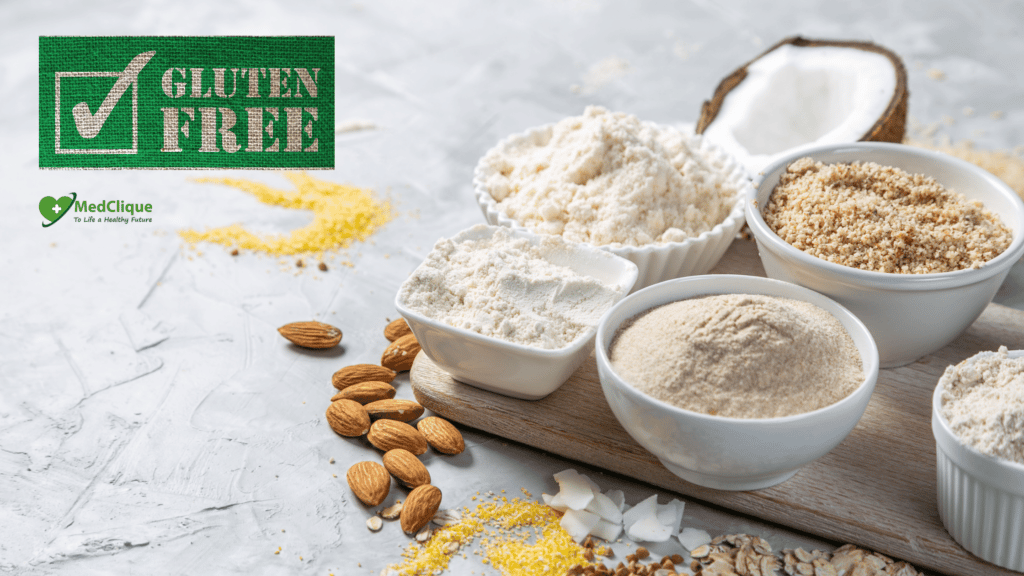A gluten-free diet is essential for most people with a gluten allergy or celiac disease a condition that damages the intestines when they eat gluten. The gluten-free diet in cereal flour is a group of proteins found in wheat and other
grains. The gluten in the cereal flour helps bind the baked goods and gives the bread a little elasticity.
As the name suggests gluten-free diet is the complete elimination of gluten from food and drink. A gluten-free diet is medically necessary for people with celiac disease and non-celiac gluten sensitivity.
A gluten-free diet is not necessarily healthy if whole foods are not chosen more often. Without proper planning, a strict gluten-free diet can be deficient in certain vitamins and minerals as well as fiber. Let’s see a few of the pros and
cons of this diet.
Advantages gluten-free diet
- Generally Nutritious A gluten-free diet can be very healthy if you pay attention to food balance and variety. Many foods are naturally gluten free. Dairy products such as milk, yogurt, also eggs, fresh vegetables, fruits, fresh chicken, and fish are gluten-free.
- May Improve Lactose Intolerance – Good news for people with celiac diseases including lactose intolerance. From time to time when you have been concerned with damage to the small intestine you can get rid of dairy products from milk.
- Generally Safe – A gluten-free diet is generally safe if you focus on a balanced and varied diet including fresh fruits and vegetables and whole grains.
Disadvantages of a gluten-free diet
- Nutritional Deficiencies – In addition to fiber a gluten-free diet may be deficient in other nutrients. This is because wheat-based foods such as cereals and bread are rich in essential vitamins and nutrients that gluten free diets often lack.
- Inconvenience – With more gluten-free products on restaurant menus and public awareness and knowledge than ever before eliminating gluten from your diet can be troublesome and require extra planning. The social context of enjoying and eating improvised food can be challenging such as during races.
- Low in Fiber – The good news is that many naturally gluten-free foods are also rich in fiber: whole grains, nuts, fruits, vegetables, beans, and lentils are gluten-free. Nutritionists recommend about 25 grams of fiber per day for women and about 38 grams for men per day (1).
Foods to avoid
The easiest way to avoid gluten is to eat raw single-ingredient foods such as bread, pasta, cereals, baked and snacks foods, sauces, beverages, and other foods.
Foods to eat
There are plenty of gluten-free options for healthy and delicious food such as meat and fish, egg, dairy products, nuts and seeds, herbs and spices, etc.
Final words
People with celiac disease need a gluten-free diet and an immune response to gluten. This causes our body to attack the small intestine which can cause abdominal pain, nausea, swelling or diarrhea. They cannot tolerate any type of gluten and should follow a gluten-free diet for the rest of their lives.
Insufficient amounts of iron and calcium fiber are found in celiac disease patients on a strict gluten-free diet. Other studies have shown that gluten-free grain products are not only deficient in these nutrients but are also
deficient in B vitamins including thiamine riboflavin niacin and folic acid.
